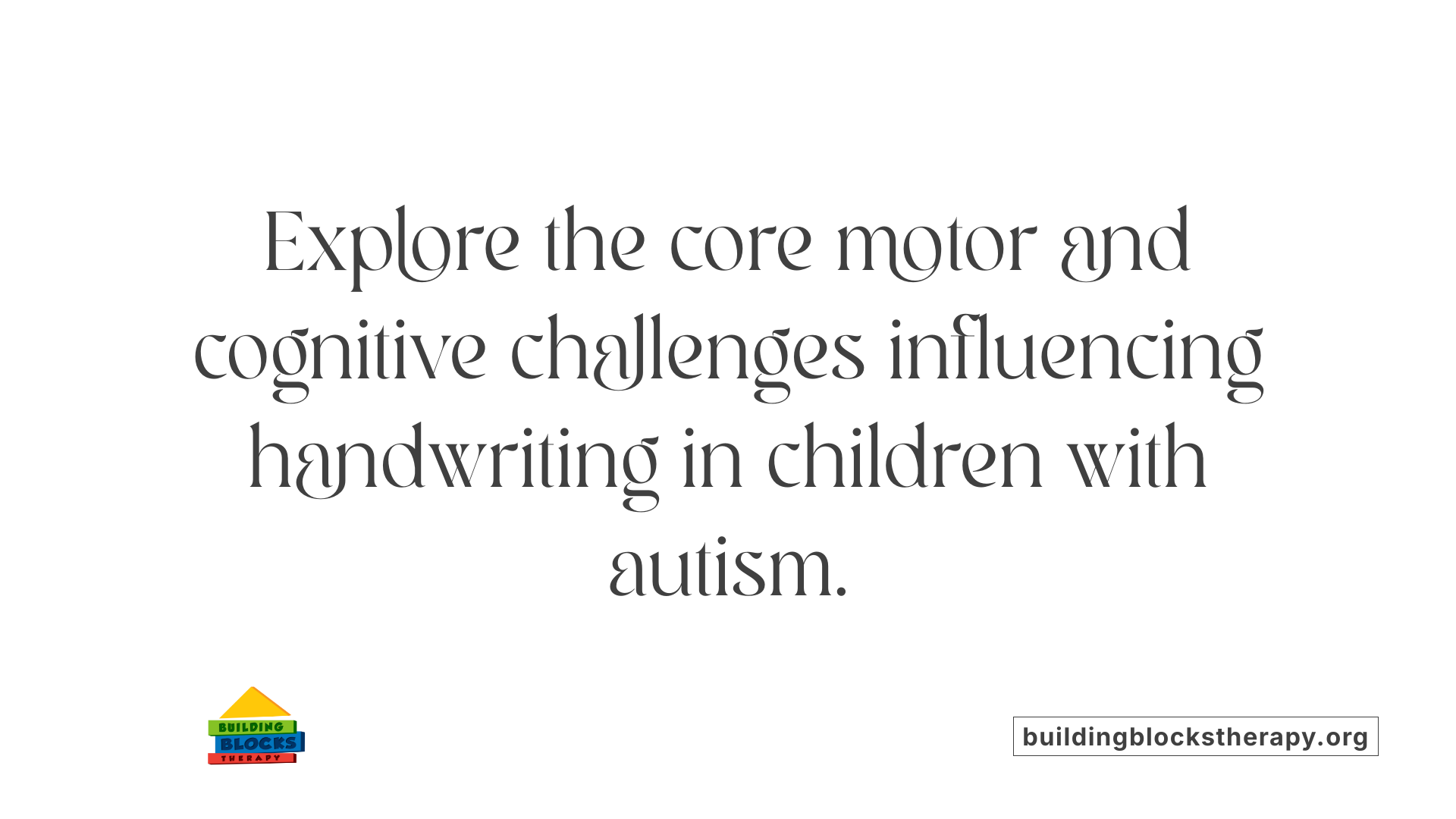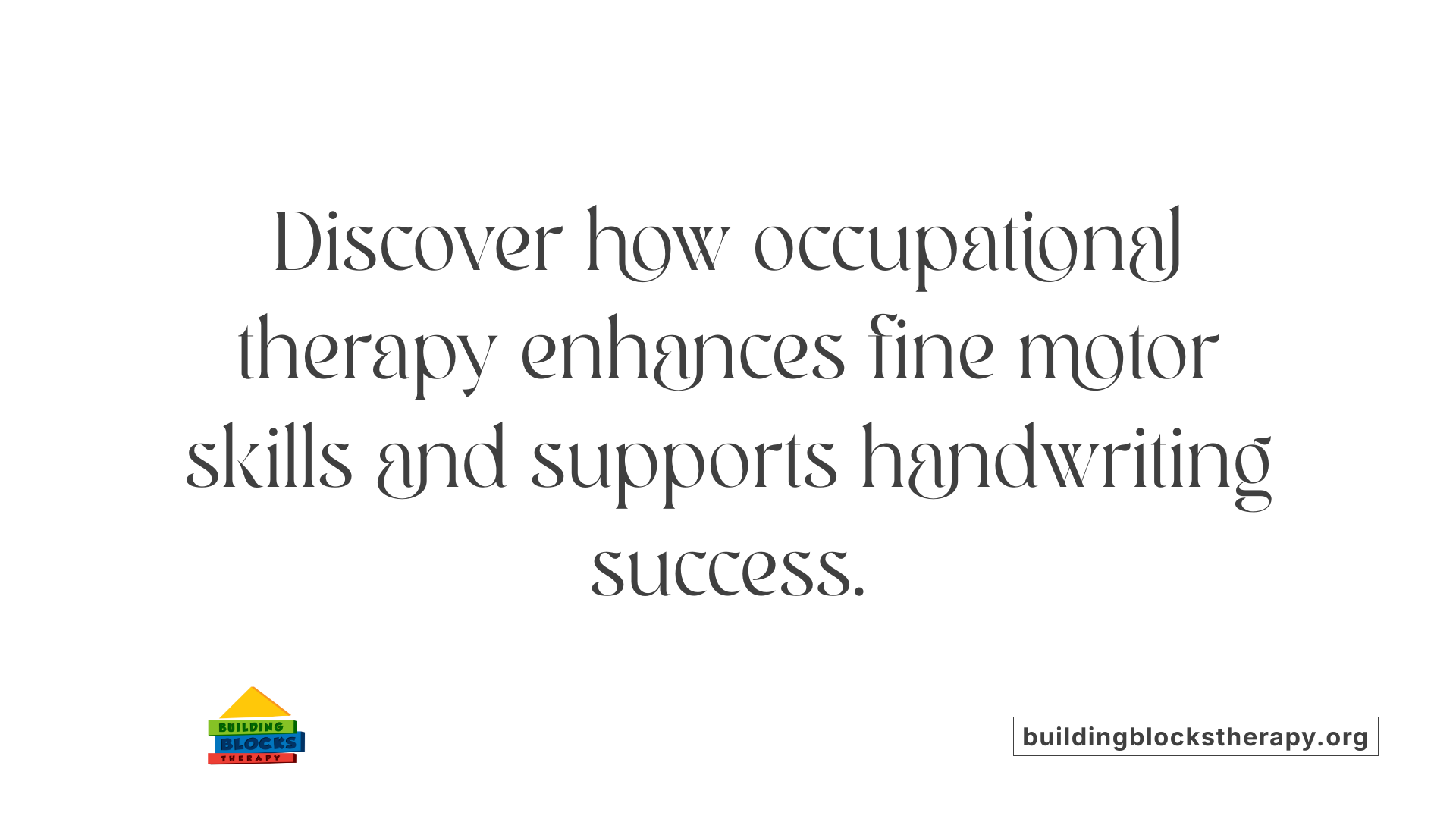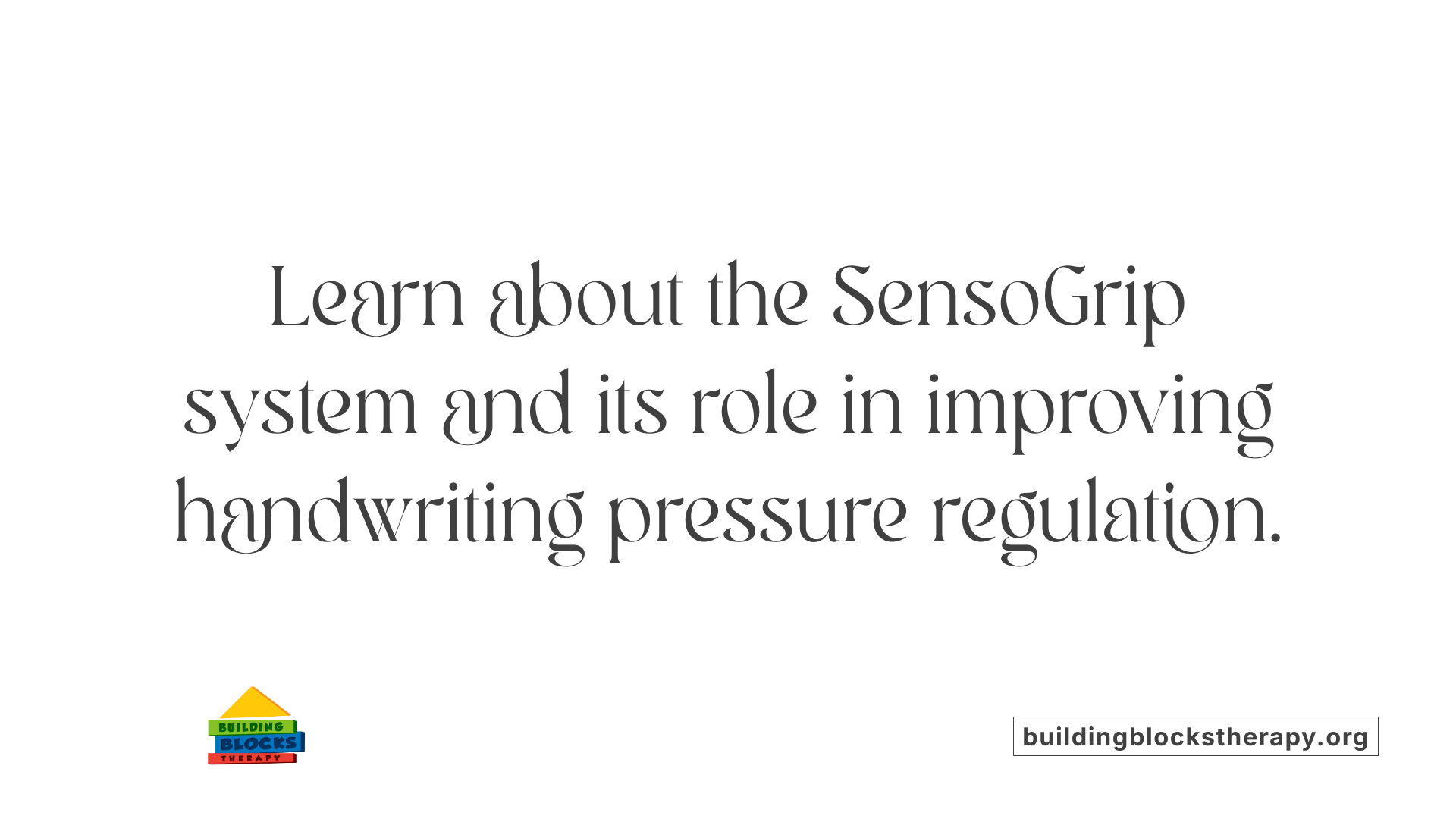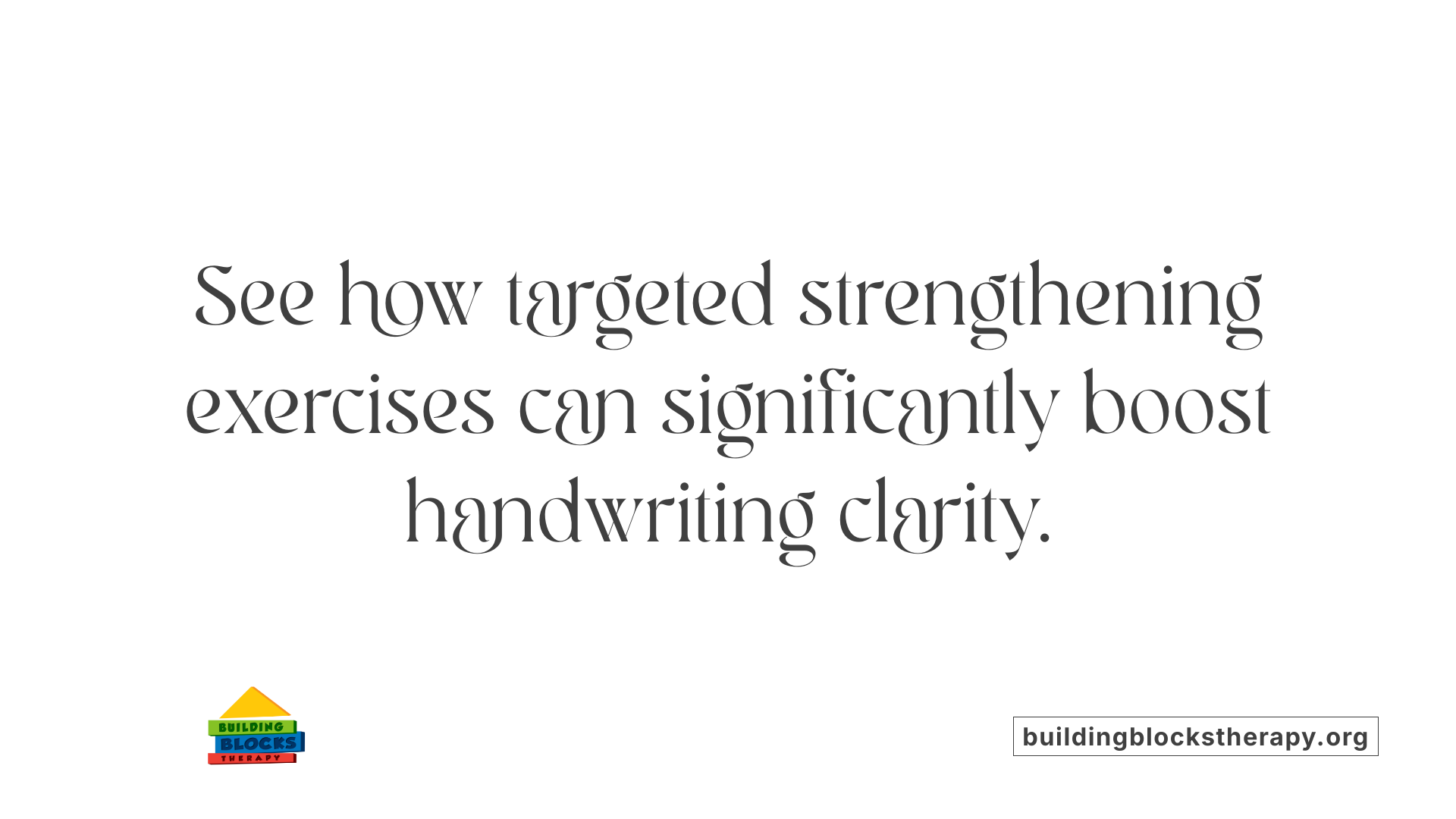The Role of Occupational Therapy in Helping Children with Autism Improve Handwriting
Enhancing Handwriting Skills in Autistic Children Through Targeted Occupational Therapy

Introduction to Handwriting Challenges in Autism and Therapeutic Solutions
Handwriting is a critical skill linked to academic achievement, self-confidence, and effective communication. However, many children with autism spectrum disorder (ASD) face significant challenges in developing legible handwriting due to fine motor difficulties, sensory processing issues, and cognitive traits such as weak central coherence. Occupational therapy offers evidence-based, individualized interventions aimed at overcoming these barriers and improving handwriting proficiency, thus supporting broader developmental goals.
Understanding Handwriting Challenges in Children with Autism

What are the common handwriting challenges faced by children with autism?
Children with autism often struggle with handwriting due to fine and gross motor difficulties. These include trouble manipulating writing tools, sensing their limb positions, and managing spatial relationships necessary for accurate writing. Such motor challenges impact their ability to maintain steady pressure and control while writing.
Another core issue is weak central coherence (WCC), a cognitive characteristic seen in autism. WCC limits the child's ability to integrate visual details into a coherent whole, making it difficult to organize elements spatially. This especially complicates tasks involving the spatial arrangement of characters, such as writing in logographic systems like Chinese, where the relationship between radicals is critical.
These compounding challenges result in poor handwriting proficiency, affecting the child's academic performance and communication skills. The complexity of handwriting tasks for children on the autism spectrum is thus amplified by both motor skill difficulties and cognitive processing differences, requiring tailored interventions to address these unique needs.
The Role and Approach of Occupational Therapy in Addressing Handwriting Difficulties

What is Occupational Therapy and How Does It Support Children with Handwriting Challenges?
Occupational therapy (OT) is a holistic, client-centered profession that emphasizes purposeful, meaningful activities to improve health, wellbeing, and functional skills. For children facing handwriting difficulties, especially those with autism spectrum disorder (ASD), OT targets essential fine motor and sensory processing abilities that underpin handwriting success.
How Does Occupational Therapy Help Children with Autism Improve Handwriting?
OT interventions address the multifaceted challenges children with autism face, including fine and gross motor skill deficits, sensory sensitivities, and difficulties with spatial relations and limb positioning. Therapists individualize treatment to each child's profile, incorporating evidence-based techniques to improve handwriting legibility, coordination, and independence.
What Types of Occupational Therapy Interventions Are Used to Improve Handwriting?
Resistive Strengthening Activities: These exercises enhance hand and finger muscle strength, which is linked to better pencil control and writing clarity. A notable study found that children with ASD engaging in specialized resisted strengthening activities over three months showed significant improvements in handwriting legibility measured by the ETCH scale.
Pressure Modulation Techniques: Tools like the SensoGrip system—a smart pen with pressure sensors and real-time visual feedback—help children regulate the amount of pressure they apply when writing. Occupational therapists reported that using such technology increased children's awareness and control of handwriting pressure, with high usability and motivation levels observed.
What Evidence Supports These Occupational Therapy Approaches?
Clinical observations and studies indicate that combining strengthening activities with sensory-based interventions can produce meaningful handwriting improvements in children with autism. The pressure-sensing pen and resistive strengthening programs have demonstrated effectiveness in improving legibility, enhancing fine motor coordination, and fostering motivation to engage in handwriting tasks.
OT supports children by blending technology and task-specific exercises, aiming for lasting gains in handwriting proficiency that contribute to academic success and self-confidence.
Innovative Tools: The SensoGrip Pressure-Measuring Pen in Occupational Therapy

What is the SensoGrip system and what are its components?
The SensoGrip system is a specialized pressure-measuring pen designed to assist children struggling with handwriting pressure modulation. It consists of a smart pen equipped with sensors that detect the pressure applied during writing. This pen connects to a companion app that displays real-time pressure data. Additionally, the pen features an LED ring providing visual feedback to the user.
How does the smart pen function and provide feedback?
As a child writes or draws, the embedded sensors continuously measure the pressure exerted on the pen tip. This data is instantly relayed to the app, allowing both the therapist and child to visualize pressure levels. The LED ring around the pen illuminates in different colors or patterns to give immediate, intuitive feedback. This real-time response helps users adjust their grip and writing pressure effectively.
What feedback have therapists and children given regarding the system?
Occupational therapists report that the SensoGrip system significantly increases children's awareness of their handwriting pressure. They also appreciate the objective measurement it offers during therapy sessions. Usability ratings from therapists are high, with median scores of 6 out of 7 for ease of use and satisfaction. Children express that the system aids their understanding of appropriate writing pressure and motivates them to practice writing more diligently.
What are the benefits seen in handwriting pressure modulation and fine motor development?
Using the SensoGrip pen, therapists have observed noticeable improvements in handwriting pressure regulation in some children. The system supports fine motor skill growth by encouraging precise control over pencil pressure. Activities such as drawing, tracing, and copying carried out during therapy—sometimes extended to home use—have shown promising results. Overall, the SensoGrip represents an innovative technological aid that enhances occupational therapy outcomes for handwriting difficulties.
Evidence-Based Interventions to Strengthen Handwriting in Children with Autism

What specific occupational therapy interventions improve handwriting legibility in children with autism?
Specialized resisted strengthening activities that target the hand and finger muscles play a crucial role in improving handwriting legibility among children with autism. These exercises focus on enhancing grip and pinch strength, which are essential for controlling writing tools and achieving clearer handwriting. Improved hand strength also correlates with greater independence in fine motor tasks beyond handwriting.
How does hand strength relate to handwriting and independence?
Research indicates that grip strength is linked to pencil control in both autistic and typically developing children. In typically developing children, grip strength also correlates with handwriting legibility; however, this correlation is not as strong in children with autism. Nonetheless, both grip and pinch strength are important for independence in daily functional activities, underscoring the importance of strengthening these muscles.
What evidence supports the effectiveness of specialized strengthening activities?
A quasi-experimental study involving 30 children with ASD aged 5 to 8 years revealed that three months of specialized resisted strengthening exercises significantly enhanced handwriting legibility. These improvements were measured using the Evaluation Tool of Children’s Handwriting (ETCH) scale, which assesses components such as word, letter, and numerical writing. The children participating in the specialized intervention demonstrated marked advancements compared to those receiving only general occupational therapy.
How do specialized interventions compare to general occupational therapy?
The study compared outcomes between a control group receiving general occupational therapy and an experimental group receiving specialized resisted strengthening activities in addition to therapy. The experimental group exhibited statistically significant improvements across multiple handwriting aspects, illustrating the superior effectiveness of targeted strengthening exercises. This evidence supports incorporating such specialized interventions into occupational therapy programs for children with autism to boost handwriting proficiency and overall fine motor independence.
Structured Handwriting Programs Targeting Visual Perception and Spatial Skills
How do structured handwriting interventions benefit children with autism?
Structured occupational therapy interventions designed specifically for children with autism focus on overcoming their handwriting difficulties by targeting visual perception and spatial skills. These programs often use geometric principles to help address spatial demands crucial to handwriting tasks, especially in complex systems like logographic writing.
One such intervention involves a 12-hour, one-on-one program that works on enhancing handwriting fundamentals while compensating for weak central coherence—a common challenge for autistic children that affects their ability to see the visual components of writing as a cohesive whole. The program incorporates activities that improve spatial relationships, visual perception, and fine motor coordination.
Positive outcomes from structured programs
This targeted intervention resulted in significant improvements in handwriting legibility, showing that such structured therapy can effectively help children with autism write more clearly and accurately. Alongside these enhanced handwriting skills, participants also demonstrated gains in visual perception and fine motor coordination, which are essential for fluid and organized writing.
Furthermore, children involved in these programs reported high levels of motivation and satisfaction. This indicates that not only are these interventions effective, but they are also well-received by the children, increasing their engagement and likelihood of continued progress.
In summary, carefully designed handwriting programs that integrate spatial and visual perceptual training, alongside fine motor practice, provide meaningful support to autistic children facing handwriting challenges. These interventions make writing tasks less daunting while building essential skills that contribute to academic success and self-confidence.
Integrating Occupational Therapy and Behavioral Approaches for Comprehensive Autism Support
What is Applied Behavior Analysis (ABA) therapy and how is it used for autism?
Applied Behavior Analysis (ABA) therapy is a well-supported, scientific approach focused on modifying behaviors by reinforcing positive skills and reducing harmful ones. It is widely used for individuals with autism to develop communication, social interaction, and daily living skills through personalized, reinforcement-based programs. This therapy often takes place in structured environments such as clinics, homes, or schools, designed to create routine and consistency for effective learning.
Who provides ABA therapy and what qualifications do these professionals typically have?
ABA therapy is typically delivered by highly trained professionals known as Board Certified Behavior Analysts (BCBAs). These specialists hold advanced education and certification in applied behavior analysis. They design individualized intervention plans based on detailed assessments and work closely with families and other care providers to implement effective programs.
How do ABA and occupational therapy complement each other in autism interventions, especially for handwriting and fine motor skills?
Occupational therapy addresses fine motor challenges, such as handwriting difficulties common among children with autism, by focusing on improving hand strength, coordination, and sensory processing. ABA therapy supports these goals by modifying behaviors related to task engagement and motivation, promoting consistent practice and skill development. Together, these therapies provide a holistic approach: occupational therapy enhances motor skills directly, while ABA facilitates behavioral changes that enable children to utilize these skills effectively in daily and academic settings.
Are there controversies and ethical considerations surrounding ABA therapy and the importance of individualized, respectful care?
Despite its benefits, ABA therapy has faced criticism regarding its historical use of aversive techniques and concerns about enforcing conformity at the expense of emotional well-being. It is essential that current ABA practices prioritize ethical considerations, respect for autistic identities, and individualized care plans. Advocates emphasize that therapy should empower individuals and honor their unique needs rather than simply focusing on normalization. Ethical ABA involves collaboration with clients and families to ensure interventions support autonomy and quality of life.
Conclusion: Advancing Handwriting Skills through Tailored Occupational Therapy
Handwriting challenges in children with autism are multifaceted, involving motor, sensory, and cognitive components that affect academic and social development. Occupational therapy offers individualized, evidence-based interventions—ranging from specialized strengthening activities to innovative tools like the SensoGrip system—that effectively improve handwriting legibility and fine motor skills. Structured programs addressing spatial perception and motor coordination further enhance these outcomes. When integrated with behavioral approaches such as ABA therapy, occupational therapy plays a vital role in supporting autistic children's holistic development, fostering greater independence and confidence in handwritten communication. Ongoing research and ethical practice remain essential to optimize interventions and respect the unique needs of each child.
References
- Evaluating the Experiences of Occupational Therapists and ...
- Enhancing Handwriting Performance in Autistic Children: A ...
- Hand Strength, Handwriting, and Functional Skills in Children ...
- Effectiveness of Specialized Resisted Strengthening... ...
- How to Become an ABA Therapist - School of Education
- How to Become an Applied Behavior Analyst (ABA) Therapist
- The effectiveness of applied behavior analysis program ...
- The Controversy Around ABA
- Efficacy of Interventions Based on Applied Behavior ...





